07 February 2024
![]() 6 mins Read
6 mins Read
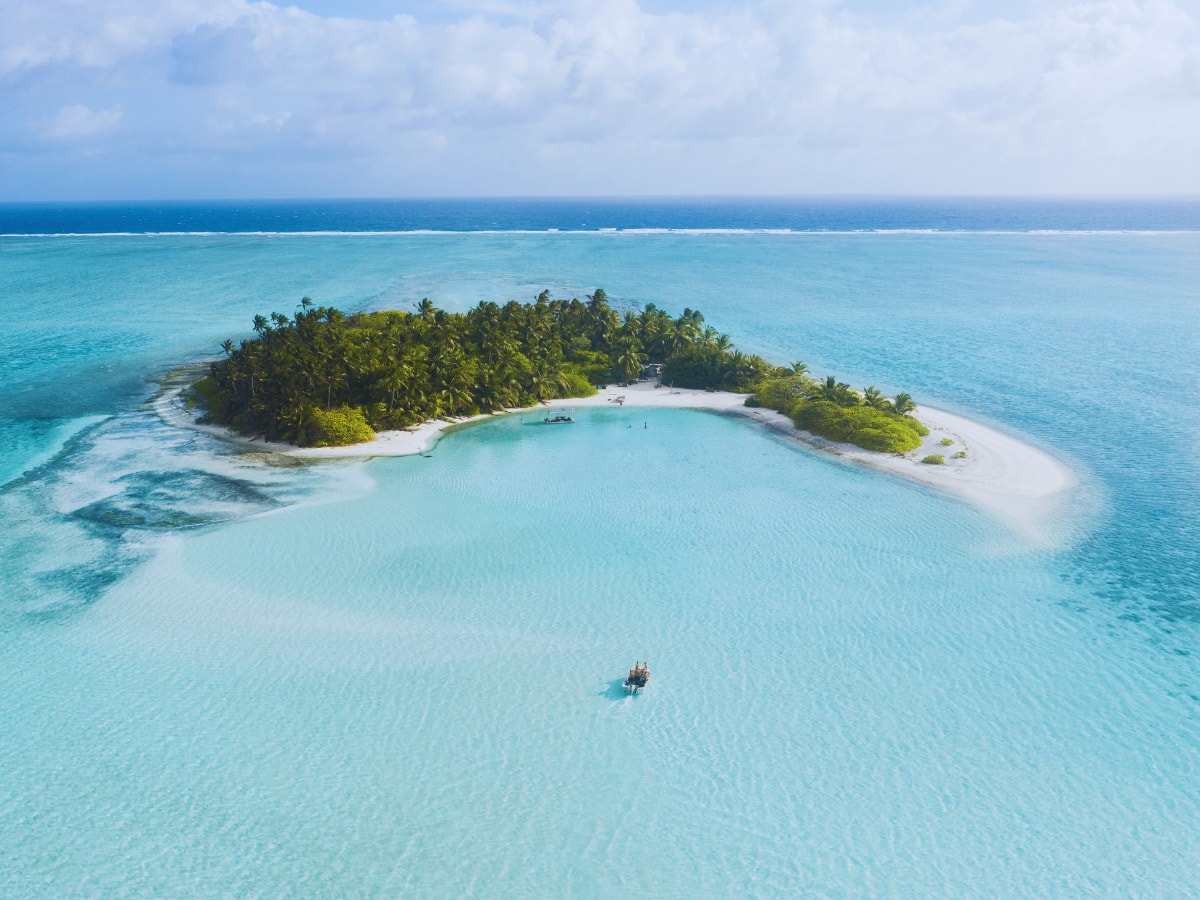
Nobody does beaches quite like Australia. So, finding the top 10 of almost 12,000 can be an arduous task. Fortunately, the job is in competent hands with beach expert Brad Farmer appointed Tourism Australia’s official beach ambassador to curate the annual best Australian beaches list.
Just like Ken in the 2023 blockbuster Barbie, Farmer’s job is “beach”. Between him and his co-author of Australia’s Best Beaches, Professor Andrew Short OAM, they hold the title together of having visited every Australian beach – 11,761 coastal beaches – which happens to also be the greatest number of any country.
Farmer’s official best Australian beaches of 2024 list has been released, with a Victorian beach claiming the coveted title for the first time. How many of these beaches have you been to?
You may not have heard of this gem in Wilsons Promontory National Park, but that ought to change. Squeaky Beach garners its name from the acoustics of compressed quartz and silica sand underfoot and is recognisable by the impressive, coloured granite boulders at either end.

Squeaky Beach is the best beach of 2024. (Image: Zac Porter)
One of the most photographed beaches in the Gippsland region, the crashing waves and clear waters of Squeaky Beach stretch for 700 metres, with wombats, kangaroos and emus all gracing the beach with their presence.
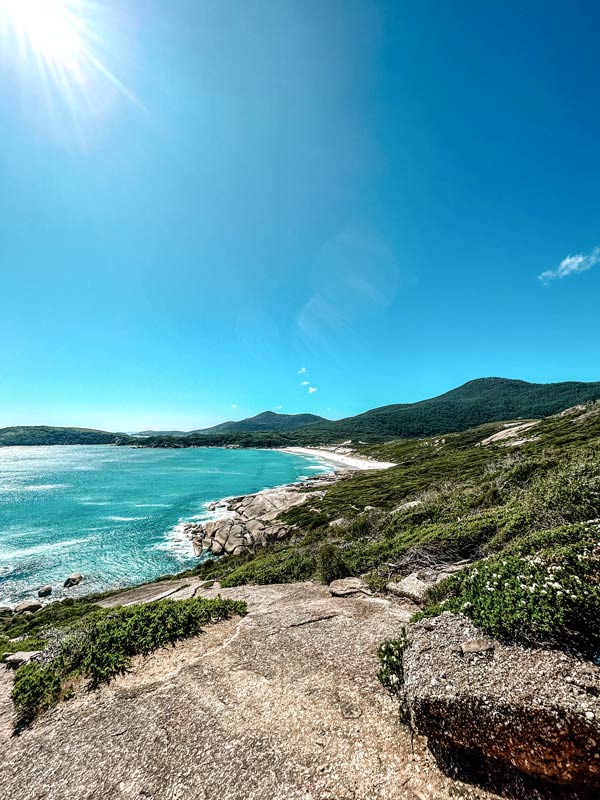
Squeaky Beach is one of the most photographed beaches in the Gippsland region. (Image: @travelsoftnt)
One of the best surf beaches in NSW, The Farm on the South Coast is a pocket-shaped spacious coastal cove, bookended by two small headlands. It is part of the Killalea Regional Park which covers 250 hectares and is home to remnant rainforest, a scenic lagoon and many endangered flora and fauna.
Killalea is known as Arrijong and is on Dharawal Country. In 2021, 681 surfers paddled out for the ‘Save The Farm Paddle-Out’ in protest against the expansion of the park. In 2022, Killalea Regional Park was officially handed over to the National Parks and Wildlife Service as a Regional Park, managed under the NPWS Act, marking its long-term protection from impending commercialisation.
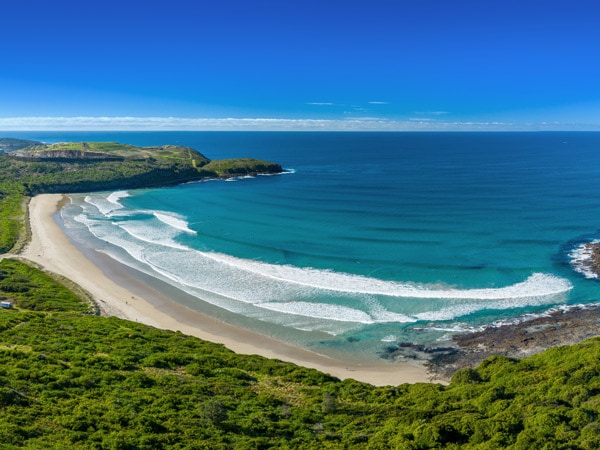
The Farm is part of the Killalea Regional Park. (Image: Kramer Photography)
Head to the end of the road at this little-known treasure in Tassie. Cockle Creek is the southernmost drivable point of Australia and the gateway to the outstanding coastal scenery of Southwest National Park.
Cockle Creek was once home to the Lyluequonny Aboriginal people. The water can drift between 12 and 18 degrees Celsius, so if you’re a lover of cold therapy, a dip here is a must. Watch nesting shorebirds, gape at the snowcapped mountain peaks and laze by the beach’s edge; this is wilderness at its best.
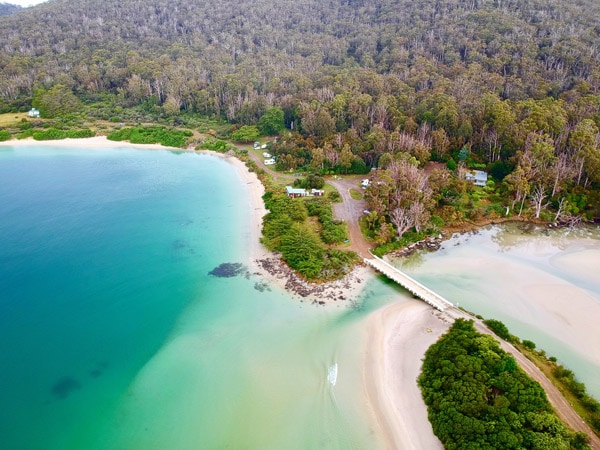
Cockle Creek is the southernmost drivable point in Australia. (Image: @jmax____)
Western Australia is a haven for stunning beaches, with travellers utterly spoilt for choice. Madfish Bay, a 20-minute drive from Denmark in the state’s south west, is a hidden utopia made up of a group of small beaches separated by natural rock outcroppings in William Bay National Park.
The semi-sheltered lagoon is perfect for kids to swim in, or if you’re a more confident swimmer, head to the right of the bay for deeper waters. Snorkel at Madfish Bay with the turquoise water a perfect place to experience the prominent sea life.
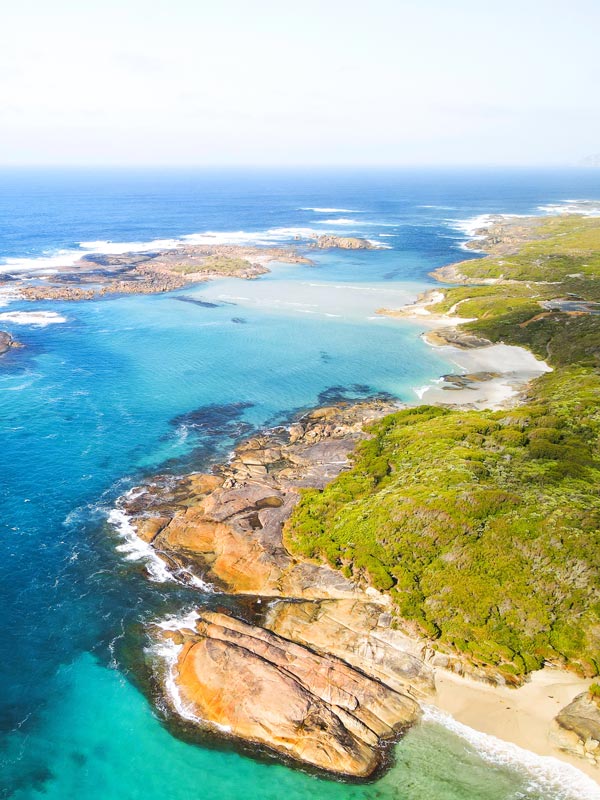
Madfish Bay is a hidden utopia in WA. (Image: @colby__james)
The Cocos (Keeling) Islands are Australia’s secret slice of paradise. Our most remote outpost is an almost-six-hour flight north west of Perth and comprises 27 idyllic islands that are so pretty you could cry.
Pulu Blan Madar is among the southernmost of the Cocos (Keeling) Islands. Its crystal-clear waters can be reached by the motorised canoe safari tour and you’ll be in awe of the mesmerising hues of blue, turquoise and azure as far as the eye can see.
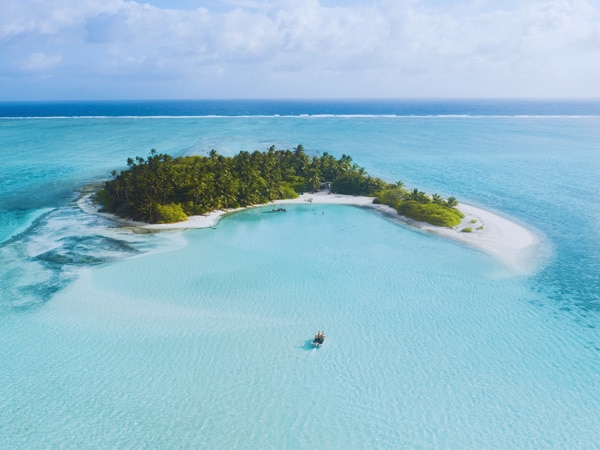
Pulu Blan Madar’s crystal-clear waters are mesmerising. (Image: Jaxon Roberts)
Found on North Stradbroke Island, Cylinder Beach is a picturesque cove and also one of Queensland’s safest beaches. This long sandy stretch is popular with families, the waves are small and it’s easily accessible.
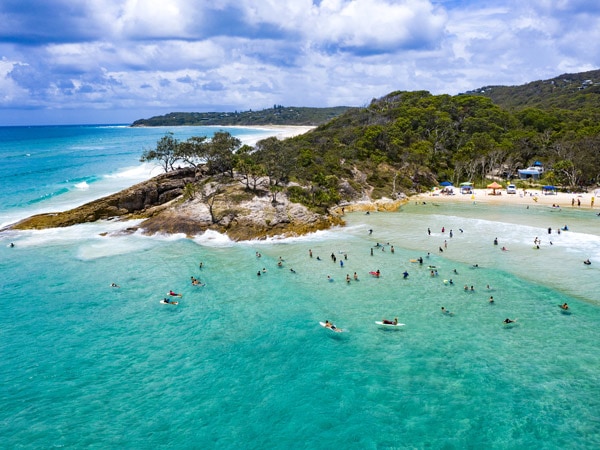
This long sandy stretch is popular with families. (Image: Tourism and Events Queensland)
Cylinder is the most popular beach on the island, but plenty of others around aren’t necessarily patrolled and swimmers must take extra care.
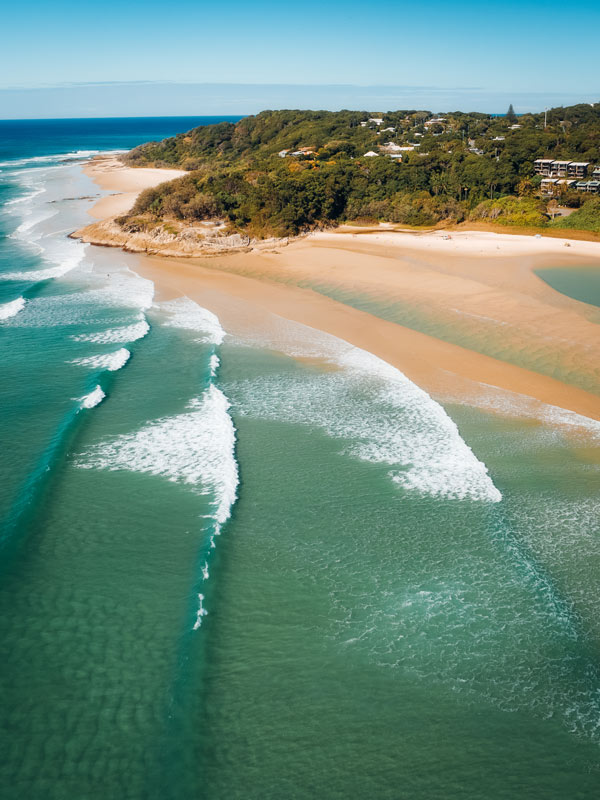
Cylinder Beach is a picturesque cove. (Image: @in_focus_studios)
Likened to Hawaiʻi due to its devilish good looks, Lord Howe Island is home to densely forested mountains, picture-perfect beaches and a pristine coral reef. Lagoon Beach is the calmest, largest and most picturesque of the island’s beaches, with the majestic Mt Gower looming over it.
With no mobile phone reception, Lord Howe demands you switch off and immerse yourself in nature. And with visitor numbers limited to 400 at any one time, it is supremely peaceful and uncrowded.
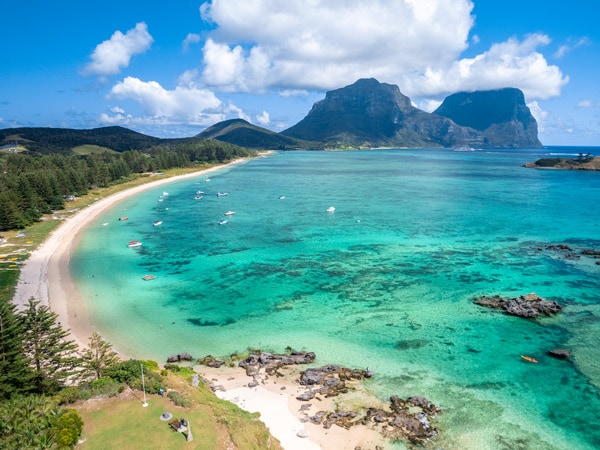
Lord Howe Island is likened to Hawaiʻi. (Image: @_markfitz)
Wave goodbye to long walks from the car to the beach, Long Beach on South Australia’s Limestone Coast allows you to drive your car right up to the water’s edge. Perfect for the elderly, infants, those with accessibility needs, waders and cautious swimmers.
The gently curved beach spans 12 kilometres and is actually a designated road with a speed limit of 25 to 40 kilometres per hour. But, there is a car-free section if you prefer.
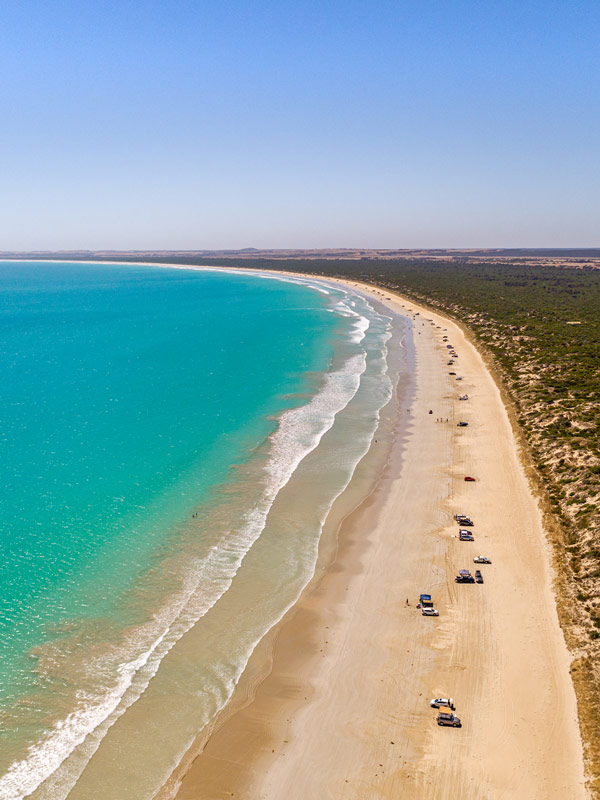
Long Beach is perfect for the elderly, infants, those with accessibility needs, waders and cautious swimmers. (Image: @visualjon)
In-between the Daintree River and Cape Tribulation you’ll find the incredible Cow Bay, on Kuku Yalanji Country. Stroll along the cream sand but don’t be fooled by the multi-blue-hued waters, because crocodiles call Tropical North Queensland home and I certainly wouldn’t be tempting them.
Stay at Cape Tribulation, where the rainforest meets the Great Barrier Reef, after a day of exploring the Daintree.
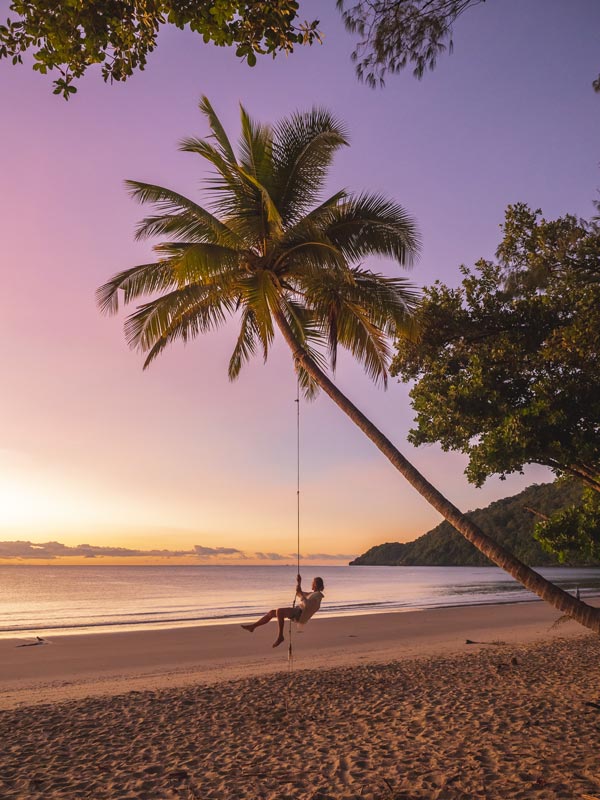
In-between the Daintree River and Cape Tribulation you’ll find the incredible Cow Bay. (Image: Tourism Tropical North Queensland)
Sitting pretty in the Northern Territory capital of Darwin, Casuarina Beach on Larrakia Country is a long-time favourite beach complimented by a forested backdrop of paperbarks, mangroves and Casuarina shaders.
If you fancy getting your kit off, there’s also a 500-metre nude section between the main beach and Sandy Creek.
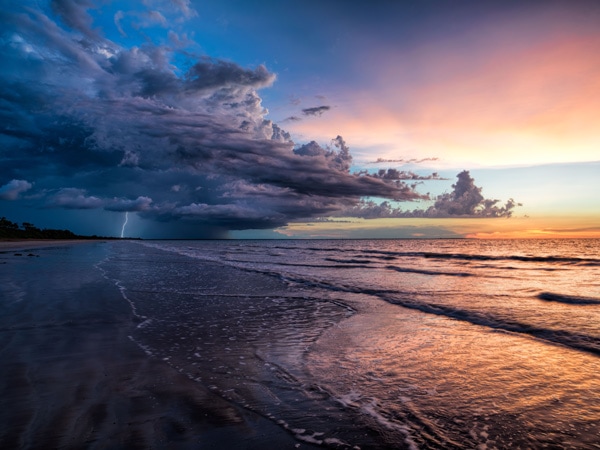
Casuarina Beach on Larrakia Country is a long-time favourite.
I disagree! Moons Moona Beach Creek is the best all round beach. The ocean slides into a shallow creek that graduates deeper up to the bridge. It is great for adults and very safe for kids. It also has shaded shore lines ideal for picnics etc. It’s on the South Coast of NSW not far from Huskisson